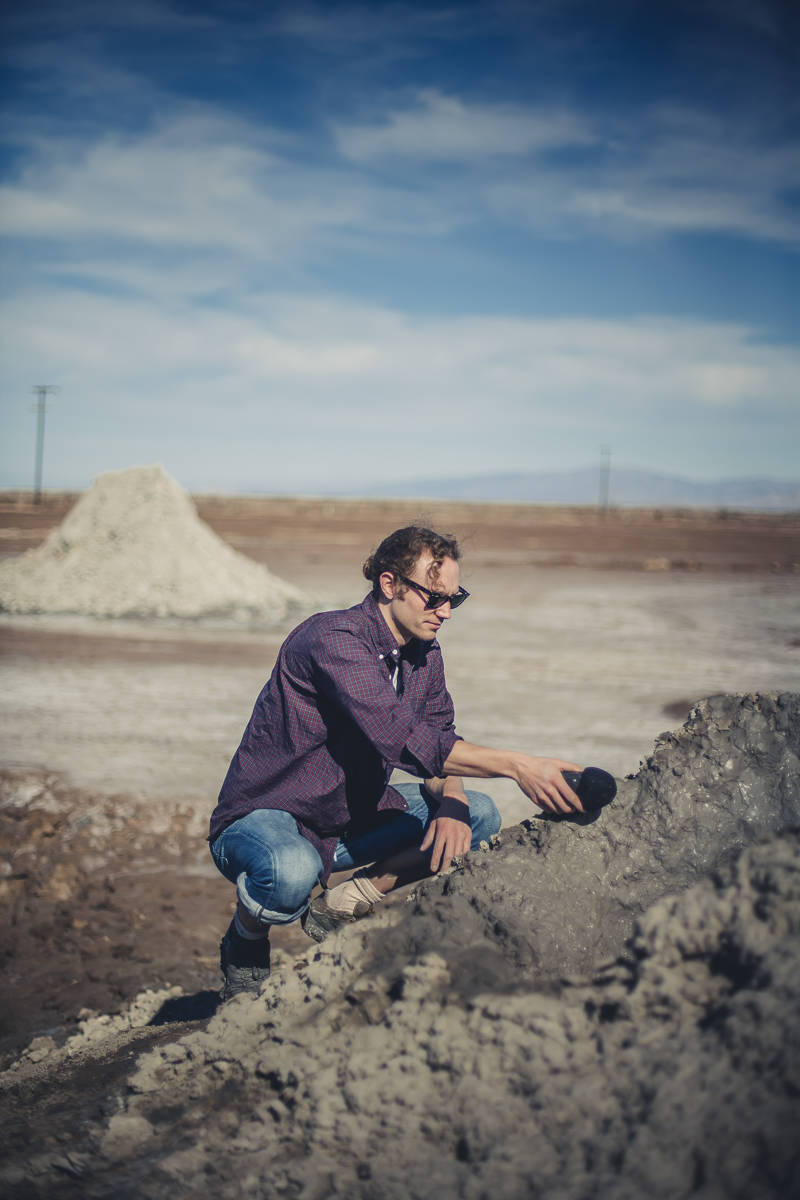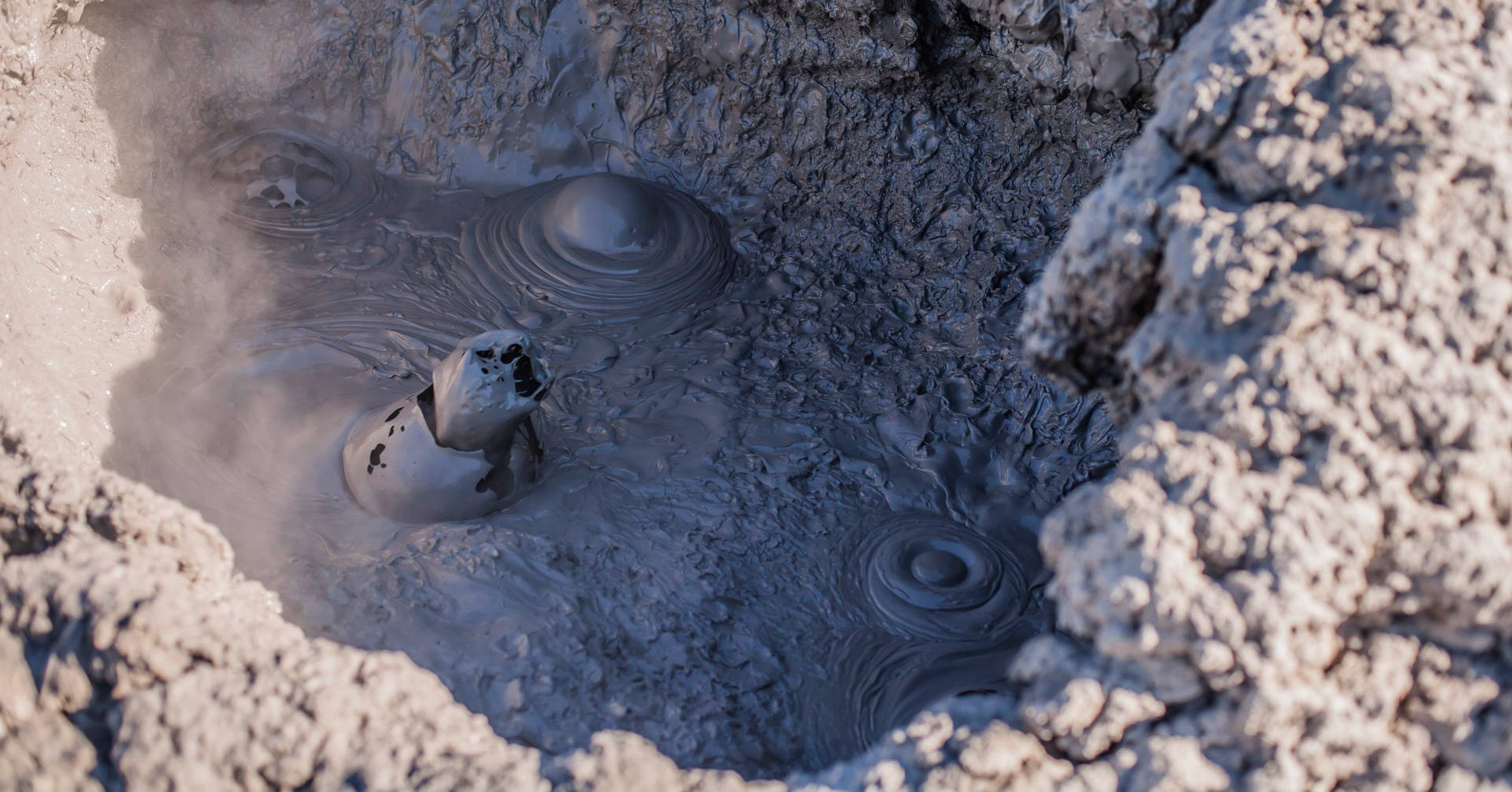All day we had been driving down streets lined with abandoned homes and undeveloped lots. We stopped to photograph the thousands and thousands of dead fish washed up onshore. It was hot and they were rotting. We met an old man sitting at a desk chair nailed to the end of a wooden dock.
“The Salton Sea is drying up,” he said, “and no one cares.”
As we talked the wind picked up, blowing polluted, powdery soil off the exposed seabed and into our faces. On the way out of town we saw a brown sign advertising mud pots, a tourist attraction. So we went.
The Salton Sea is a perfect habitat for mud pots. The area has a peculiar history. It was once an inland sea, then the delta of the Colorado River. Since the turn of the 20th century it has been a man-made salt lake surrounded by farms. The sea had a brief moment in the 1950s as a resort spot. Real estate boomed, then busted. Today, people come to gawk at the post-apocalyptic landscape and a community of drifters that painted a mountain for Jesus. Some, though, come to see mud pots.

Mud pots, like these in Yosemite, form when there is the right combination of geothermal activity, particulate soil and lack of water. The Salton Sea has plenty of geothermal activity. Geothermal power plants circle the shore, marking the landscape with their giant plumes of steam.










